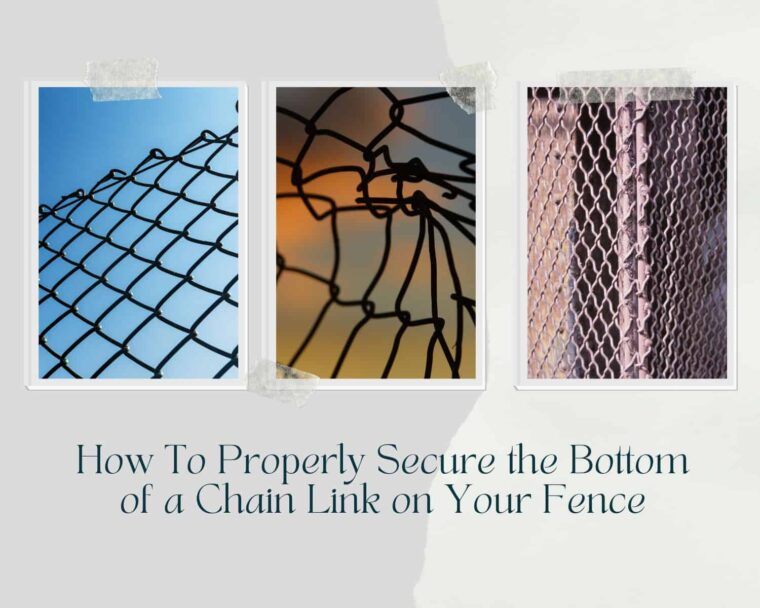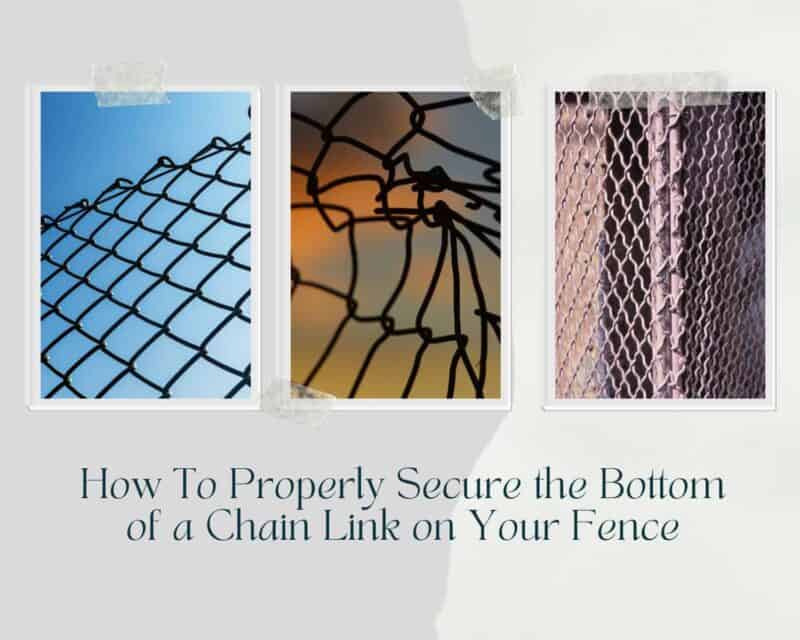Everyone loves their fence, but what would happen if there was a weak spot on the bottom of the chain link? It could be a costly mistake to ignore this issue. Not only will it wear down your fence faster than before, but it could also lead to more significant issues, like having your dog or child get hurt by falling through the hole. It’s, therefore, essential to ensure that you secure your chain link fence to remove any weaknesses and to ensure it’s functional and serves the intended purpose.
Causes Of A Weak Fence
There are many causes of weak chain link fences that may force you to reinforce them to improve their resistance. Some of the common ones include the following:
Your Fence Was Poorly Built
If the bottom of your chain link fence is not built correctly, it will not last!
When a fence is poorly built, it can lead to many problems, the most significant being that the lower section of your chain link fence might wear out faster than usual. This issue occurred when the person who constructed your fence did not use enough material during construction or they do not have any idea how to build a strong fence in the first place.
If you notice some cracks or holes on your chain link fencing, it could indicate that something is wrong and needs to be fixed immediately before things get worse there.
Your Fence Is Old and Has Been Worn Down Over Time
When the bottom of your fence chain link weakens, it is more susceptible to damage. Several factors: can cause this
- Weathering
- Sunlight exposure
- Vandalism and other accidents that have taken place on your property
You Have a Dog That Chews on Your Fence
If you have an aggressive chewer, you can do a few things. When your dog is not around and when they are, keep them away from the fence. If this is impossible, try attaching a muzzle or having someone else hold onto the dog while you fix their chain link fence. This way, your dog cannot chew on it during repairs.
When working on repairing damaged metal links in your chains, be aware that if you cannot stop your dog from chewing on the fence entirely or do so only temporarily. With an extra pair of hands, then what’s happening at the bottom of each link is that as he bites down into it over time and pulls away with his teeth, as any other pet would, he’s weakening these connections inch by inch every time he does so, as well as scraping off some paint.

Steps To Secure the Bottom of Your Chain Link
Now that you know what causes weak chain links at the bottom, here are the steps for securing the bottom of your chain link:
Measure the Total Length of the Chain-Link Fence
Measure the total length of your fence, including gate posts and hinges. Multiply the measurement by two, then divide it in half to get an approximate width of your chain-link fence panels. The number you should arrive at should be within a 5% margin of error, i.e., if your fence is 100 feet long, you should be able to round up or down to 100 inches.
Wrap A Tie Wire Around the Bottom
Wrap a tie wire around the bottom of your chain link fence and one of the fence posts. Tie wires are small, coiled pieces of steel wire with loops at both ends. They are used to secure chain link fences and other metal fences by wrapping them around one post and twisting them together, which creates a tight hold that won’t loosen over time or with temperature changes.
Ensure enough space between each loop so you can slip in another tie wire if needed later down the line.
Secure the Wire End
Use needle-nose pliers to twist the end of the tie wire around the middle of the tie wire. You want to ensure that all your strands are secure and tucked in. Please don’t cut off any excess tie wire when you’ve finished twisting it together; use a pair of snips or cutters to clip off any extra pieces sticking out from your chain link fence bottom.
Cut The Other End Off
Once you have cut through the excess tie wire and pulled it away from the posts, you can begin to wrap your tie wire around each post. It’s important to leave yourself enough length on each end so that when you wrap them around the post, they will overlap by about an inch. The last thing you want is the ends of your chain link fence to fly loose in the breeze.
When wrapping your chain link fence, ensure that there is plenty of tension on each wrap so that everything stays secure during installation. You don’t want it too tight or loose either; right is good enough here. If necessary, use pliers or another pair of hands to help keep everything tight as you install your new fence.
Repeat This Entire Process
Repeat this process for each post until you have secured all posts in the chain-link fence row.
Make sure you do not cut the tie wire too short, as it will leave an exposed end of the chain link or cause a gap between the two fences if too much is removed. Also, ensure that you are using tie wire of sufficient length for your fence; if it’s too short, it can pull out during windy conditions and cause damage to your property or injury to yourself or others who may be around when this occurs.
You’ll want to ensure that every bar’s bottom is secure. You’ll also want to ensure that you’ve cut off any excess tie wire because it’s not going to be helpful and can get caught on stuff or people’s clothing if left on too long.
Conclusion
If you’re trying to repair a chain link fence, the bottom of the fence is always an area that needs attention. It can be challenging to find information on all the different ways to fix this area or even how to recognize when it is time for repairs. This article has covered everything you need to know about securing a chain link fence and some tips for identifying when your fence needs help.



